Steel Toe Vs Composite Toe : Everything You Need To Know
The main difference between steel toe vs composite toe boot or shoe is the material of the toe cap. While composite toe boots lack the heavy-duty toughness of steel toes, they are lighter, last longer, and can handle temperature extremes better. These two boot types are designed to shield the feet from injury caused by rolling or falling objects. But which one should you choose? To select the best one for your needs, you must understand their differences first. This post is here to help you out.
Composite Toe vs Steel Toe Boots: Which Is Better for You?
[acf field=”list”]Composite Toe Vs Steel Toe: Impact and Compression
Steel toe boots feature an inner toe box that is made using heavy-duty steel. This steel toe cap shields your toes from danger. Boots and shoes with steel toe caps offer the maximum degree of protection against impact, compression, and puncture. These hazards may occur as a result of heavy objects falling or rolling onto your feet. These types of hazards are common in fields like manufacturing, construction, and facilities management.
Broken or crushed feet and toes can be incapacitating and may even last a lifetime. That is why OSHA (Occupational Safety & Health Administration) specifies that workers who are at risk of foot injuries at the workplace must wear proper protective footwear. With a steel-toe boot, you can be certain that your feet are adequately protected. What about composite toe boots? Do they provide the same degree of protection against falling or rolling objects?
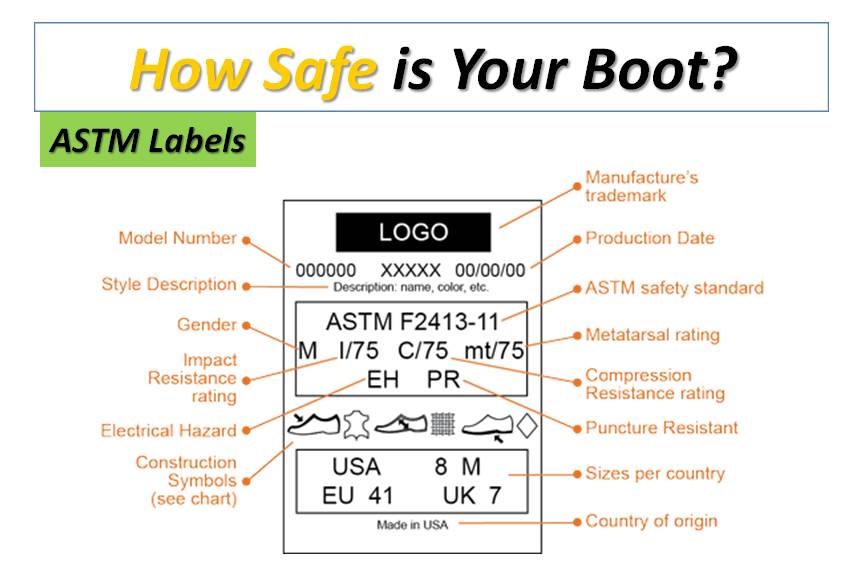
Composite toe boots are a fantastic alternative to steel toes. They work in the precise same manner as steel toes boots explained above. However, they differ in that the material used in making the toe cap is not steel. The toe cap material of composite toe boots is typically made using non-metals materials such as hard plastics, fiber-glass, kevlar, and carbon fiber.
These materials offer benefits that are comparable to those provided by steel toes. Composite toe boots, like their steel equivalents, are ASTM F2413-11 certified to shield your feet against hazards at the workplace. Composite toe boots & shoes are a comparatively new entrant in the world of safety shoes. They are approximately thirty percent lighter compared to their steel toe cousins. And, because they are made using a combination of non-metal materials, some composite toes provide greater resistance and strength than steel toes.
Ultimately, this all means that both composite toes and steel toes provide the same degree of protection against heavy rolling and falling objects at the workplace.
Steel Toe Vs Composite Toe: Which is More Comfortable?
Another key factor to consider when deciding between steel toe & composite toe is comfort. As stated earlier, composite toecap boots and shoes can be lighter compared to steel toecap boots. But how does this impact comfort, considering that the toecap’s weight is only a small fraction of the boot’s overall weight? Bear in mind that if you spend the majority of your workday on your feet, even a minor weight difference can wear you down faster and impede breathability, resulting in various foot problems. Do not forget that comfort is subjective. So deciding to choose one boot type over another may be a matter of your personal preference.
See also: How to Break In Work Boots Fast
Furthermore, if you opt to go with composite toes because they are lighter and hence more comfortable, remember that several other factors can influence weight. These other factors include the boot’s upper material, outsole material, level of padding, shank material, and insulation. Therefore, if you are looking to purchase protective work boots that come within a lightweight package, shoes made using state-of-the-art materials and technologies for their upper, insulation, and sole may be your best bet.
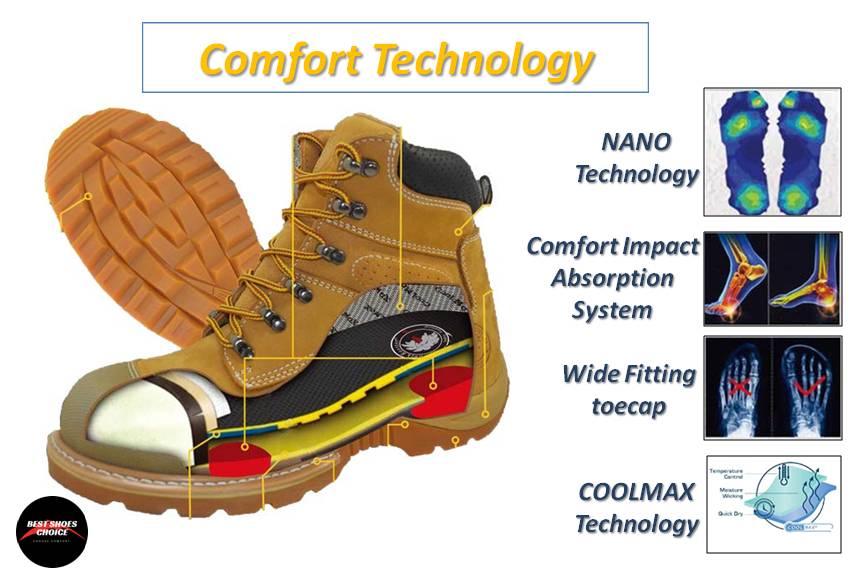
Steel Toe Vs Composite Toe: Which is More Metal Detector Friendly?
Since composite toes are made using non-metallic materials, they do not trigger metal detectors as their metal toe cousins do. This means that composite toes are perfect for people who work in airports, railway stations, and security checks. However, some composite toes are fitted with steel shanks and may thus not be metal detector friendly. If you have to pass through metal detectors at your workplace, you will require footwear that has no metallic components.
Most people will have no trouble passing through security at their workplaces no matter the boot type they have; however, this is one area where composite toes have a clear advantage over steel toes.
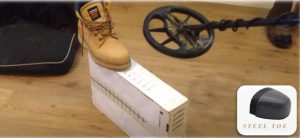
Steel Toe Vs Composite Toe: Which is Better for Cold Weather?
A dependable pair of cold weather work boots should have in-built insulation for extra warmth. There is a general belief that composite toes outperform steel toes in extreme cold. This makes sense theoretically because metal is an excellent heat conductor. Therefore, if you wear steel toes in cold weather, that metal piece within the toecap will conduct heat away from your warm skin to the cooler exterior. In contrast, the plastic material fitted within the toecap of most composite toes is an excellent thermal insulator.
See also: How to Keep Feet Dry in Work Boots
This means that composite toes will work better at ensuring that your feet stay warm during cold weather. OSHA suggests that people who work in cold conditions should wear properly insulated and waterproof boots or shoes. However, OSHA does not make a recommendation for steel toe vs composite toe. If you are shopping for cold weather work shoes, you may want to opt for insulated and waterproof composite toes, which are widely available in the market.

Steel Toe Vs Composite Toe: Fit
The best work shoes are the ones that fit nicely to your feet. Wearing ill-fitting shoes for extended periods can result in foot conditions like corns, blisters, and ingrown toenails. Here, it is more about how well a pair of boots accommodate your feet and less about steel toe vs composite toe. You should never wear tight-fitting steel toe or composite toe boots for several weeks hoping that they will break in and get comfortable. This is because the protective toecap of these boots cannot stretch and mold to your foot’s outline the way leather does.
The Industrial Safety and Health News suggest the following tips to find an excellent shoe fit:
- Do not always rely on the label
- Measure your feet before purchasing a new pair of work boots or shoes
- When trying on a new pair of work boots, wear the same socks type that you plan on wearing with the boots
Remember that the material fitted within the toecap can affect the boot’s size and shape. To provide the same degree of protection as steel toes, composite toes need to be a bit thicker. This extra thickness tends to make the boot look somewhat bigger and more bulbous.
Steel Toe Vs Composite Toe: Which is More Durable?
While both steel toes and composite toes are designed to resist the same impacts, a single substantial blow may compromise or damage most composite toe boots. Steel toes provide superior impact resistance plus durability in the long term.
Composite Toe Vs Steel Toe: Electrical Conductivity
Steel conducts electricity better than composite materials. If for some reason the metal strip on the toecap gets exposed and comes in contact with bare skin, this can put the electrician at risk. The electrician may get electrocuted if electrical charges pass through the boot. Also, steel boots conduct heat and since sparks of electric current can generate large amounts of heat, the electrician is also in danger of getting burnt.
Composite toes do not conduct heat or electricity, which makes them a safer choice for electricians. These will not cause fire outbreaks and will not get the electrician electrocuted. While it is recommended that electricians avoid wearing steel toes when dealing with high electrical currents and voltages, it should be noted that many steel toe boots meet the ASTM benchmark for electrical hazards.
Steel Toe Vs Composite Toe: Workplace Requirements
Certain professions like carpentry, farming, and hospitality require their employees to wear steel-toe shoes and boots to prevent accidental injuries. If this situation applies in your profession, then the decision is not up to you. If, however, you are permitted to wear any safety shoes, you may want to settle for composite toes because they are lighter and maybe more comfortable.
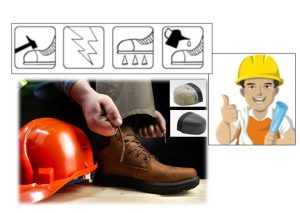
Steel Toe Vs Composite Toe: Cost
Both composite toes and steel toes are available at a wide range of prices. But generally, composite toes are costlier than their steel toe counterparts.
Steel Toe Vs Composite Toe: Pros and Cons
Composite Toe
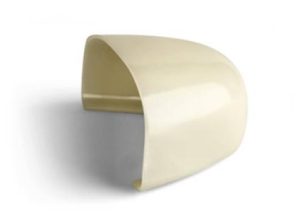
- Lightweight
- Excellent electrical resistivity
- Metal detector friendly
- Superior insulation against cold
- Costly
- Provides less impact and compression resistance
Steel Toe
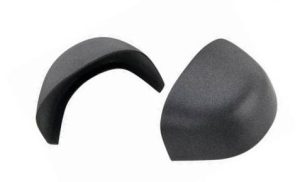
- Provides greater impact and compression resistance
- Greater puncture protection
- More affordable
- Greater abrasion resistance
- Heavier and causes fatigue faster than would normally occur
- Less suitable for electricians
- Triggers metal detectors
- Conducts cold
Comparison of Steel Toes and Composite Toes
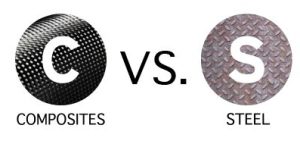
| Steel toe | Composite toe | |
| Weight | Heavier | Lighter |
| Material | Steel | Fiberglass, plastic, carbon |
| Cold Weather | Less suitable for cold weather | More suited for cold weather |
| Price | Cheaper | Costlier |
| Metal detector | Not metal detector friendly | Metal detector friendly |
| Durability | More durable | Less durable |
Final Words
When in the market for safety toe boots or shoes, both steel toes and composite toes can work well for you. Just be sure to select one with features that fit your specific requirements.
